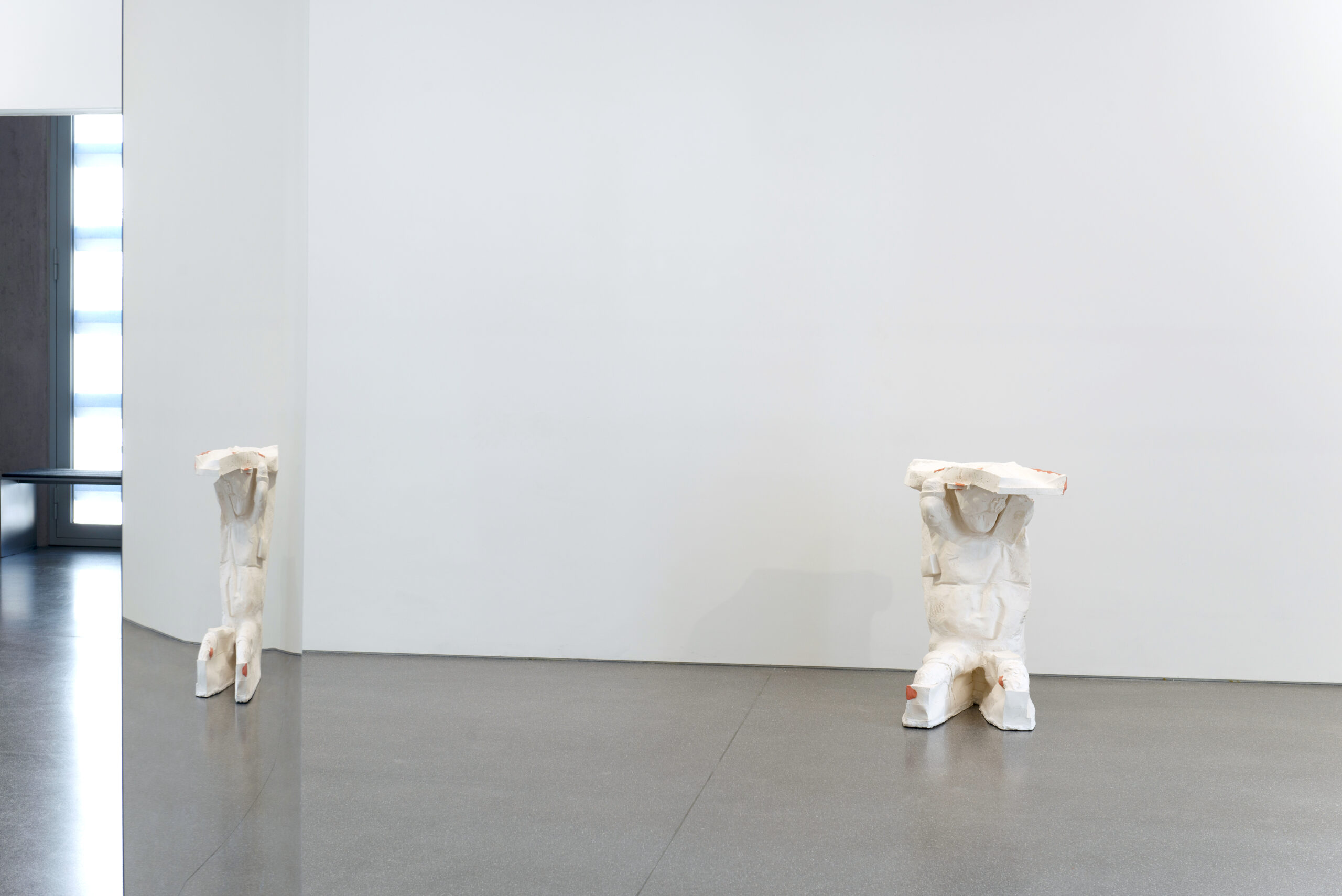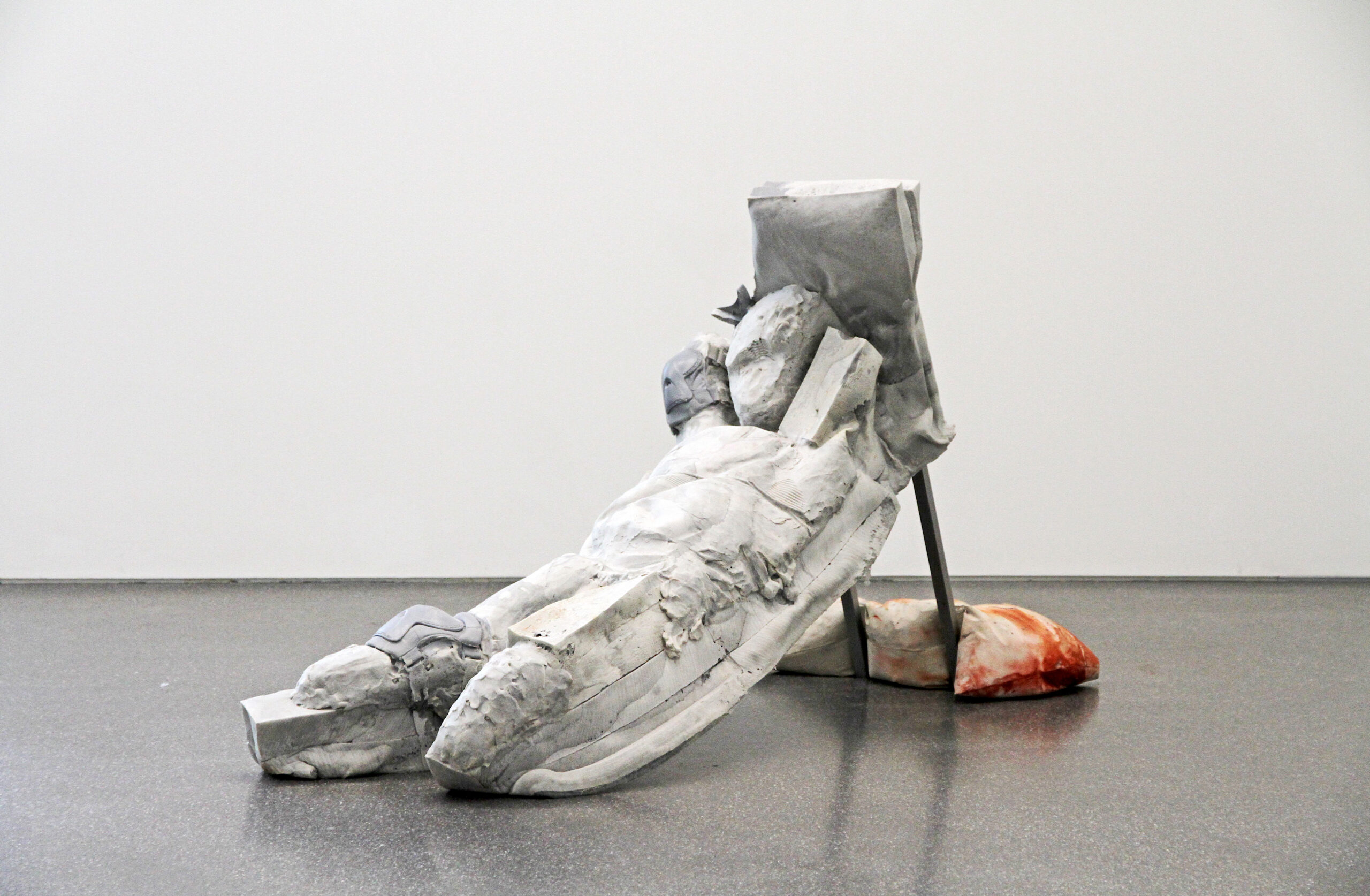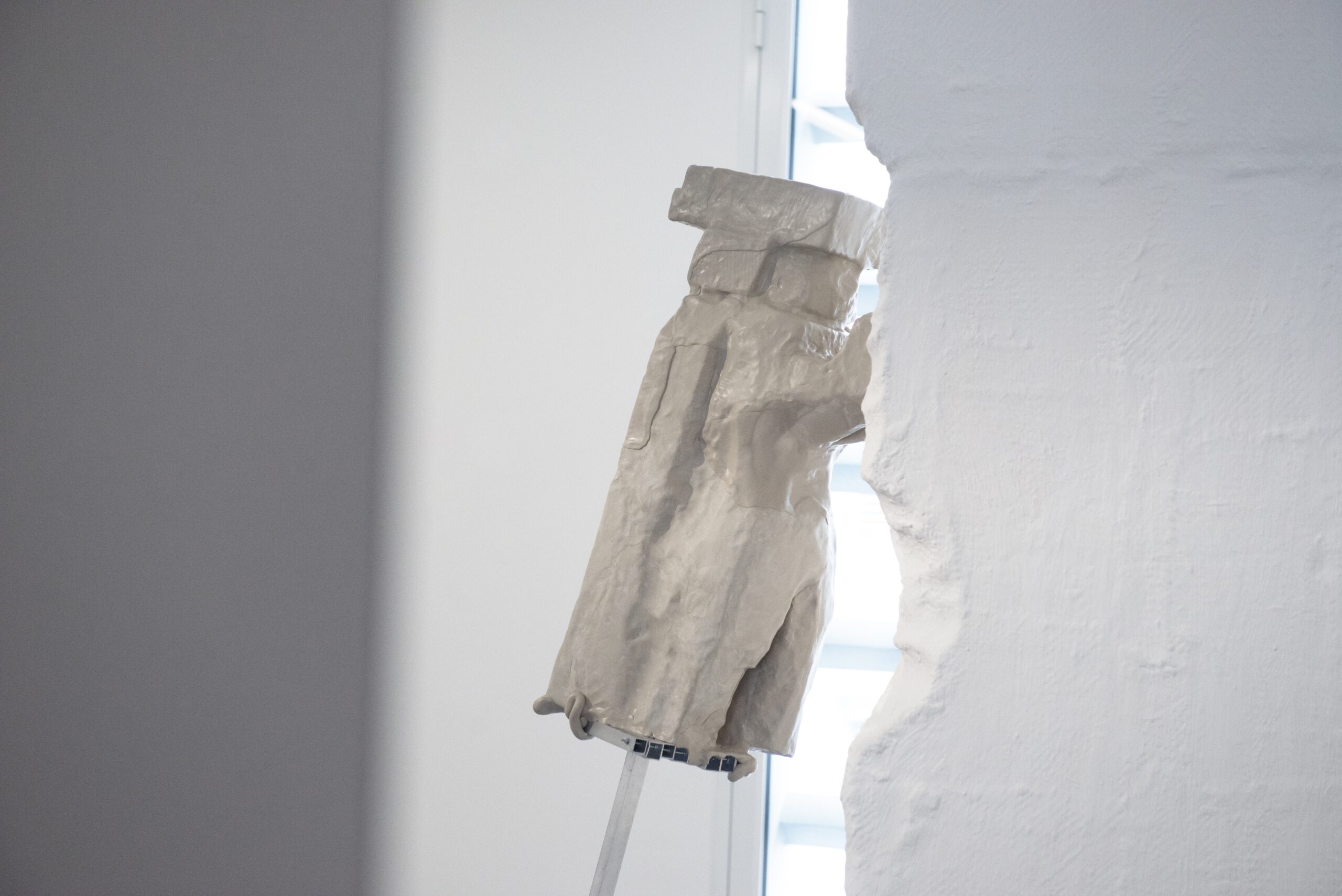Ludovica Carbotta. Die Telamonen
Exhibition from March 12 till August 8 2020
Curated by Damian Jurt
(e) Ludovica Carbotta (*1982) realises her first solo exhibition in Switzerland at the Art Museum Graubünden. The Italian artist is inspired by the works in the museum collection of the Giacometti-dynasty. From these she develops powerful sculptures charged with tension, which together constitute the ten-member family of The Telamones.
All families consist of different personalities. The shapes that Ludovica Carbotta gives her sculptures are equally varied. In the process she endows every sculpture with its own age by developing different scenarios and interpretations for the sculptures in question. If we apply the notion of age to an imaginary sculpture, it is fairly easy to imagine an old one. But what does a sculpture that corresponds to a young person or a child look like? Ludovica Carbotta allows herself to be guided by her own memory and creates sculptures that communicate with each other by means of signs and ornaments. As though the artist were giving time a physical form, the present, the future and the past stand next to each other in the exhibition as members of the same family. Furthermore, when Ludovica Carbotte refers to the quotation by the Argentinian writer Jorge Luis Borges “Mirrors and copulation are abominable because they increase the number of humans” she questions the concept of family as a desirable form of relationship, examines its role in society and places it in association with aspects such as identity or self-determination.
Each sculpture of The Telamones family has its own biography and personality. Their story is about the loss of a time passed and about the search for a common future. Here is their story: The Telamones have not overcome the loss of their past. Its disappearance has left deep scars. While Stine Telamon comes to terms with this and looks calmly into the future, Felice Telamon is almost crus- hed by his grief. He is aware of his fragile nature and avoids dealing with the past. Fausta Telamon feels responsible and consistently tries to uplift him. Despite her congenital illness, which makes it impossible for her to walk upright, she is at peace with herself. Even so, why does she still dream every night about being able to fly?
(g) Ludovica Carbotta (*1982) realisiert mit dem Auftritt im Bündner Kunstmuseum ihre erste Einzelausstellung in der Schweiz. Die italienische Künstlerin lässt sich von Werken der Giacometti-Dynastie aus der Museumssammlung inspirieren. Daraus entwickelt sie kraftvolle und spannungsgeladene Skulpturen, die zusammen die zehnköpfige Familie Die Telamonen bilden.
Alle Familien setzen sich aus unterschiedlichen Persönlichkeiten zusammen. Ebenso vielgestaltig sind die Formgebungen, die Ludovica Carbotta ihren Plastiken gibt. Jeder Skulptur verleiht sie dabei ein eigenes Alter, indem sie verschiedene Szenarien und Interpretationen der gleichartigen Skulpturen erarbeitet. Es fällt dabei leicht, sich eine Skulptur vorzustellen, die einer älteren Person gleichkommt. Aber wie sieht eine Plastik aus, die einem Jugendlichen oder Kind entspricht? Ludovica Carbotta lässt sich von ihrer eigenen Erinnerung leiten und schafft Skulpturen, welche über den Einsatz von Zeichen und Ornamenten miteinander korrespondieren. Als ob die Künstlerin der Zeit eine physische Form gibt, stehen in der Ausstellung Gegenwart, Zukunft und Vergangenheit wie Angehörige der gleichen Familie nebeneinander. Wenn sich Ludovica Carbotta zudem auf das Zitat «Spiegel und Paarungen sind unerbittlich, weil sie die Anzahl von Menschen er- höhen» des argentinischen Schriftstellers Jorge Luis Borges bezieht, hinterfragt sie die Familie als erstrebenswerte Beziehungsform, untersucht ihre Rolle in der Gesellschaft und setzt sie in Beziehung zu Aspekten wie Identität oder Selbstbestimmung.
Jede Skulptur der Telamonen-Familie hat eine eigene Biografie und Persönlichkeit. Ihre Geschichte erzählt vom Verlust einer vergangenen Zeit und von der Suche nach einer gemeinsamen Zukunft. Ihre Geschichte wollen wir nicht vorenthalten: Die Telamonen haben einen schweren Verlust erlitten. Er hat tiefe Narben hinterlassen. Stine Telamon findet sich damit ab und blickt abgeklärt in die Zukunft. Aber Felice Telamon wird von seiner Trauer nahezu erdrückt. Er weiss um sein zerbrechliches Wesen und meidet die Auseinandersetzung mit der Vergangenheit. Fausta Telamonfühlt sich verantwortlich und versucht ihn regelmässig aufzurichten. Trotz ihrer angeborenen Krankheit, die es ihr verunmöglicht, aufrecht gehen zu können, ist sie mit sich im Reinen. Warum träumt sie dennoch jede Nacht davon, fliegen zu können?




